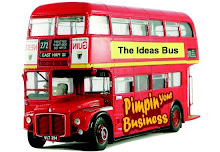Imagine this...you want to buy something. You make your decision, you jump in your car, you drive to the store. You look for a carpark, you jump out of your car and you walk to the store. You get there and it's closed. You look for the store's opening hours and there it is in white painted font on a clear background which you only just pick up. That's only if you're lucky! Sometimes, the opening hours are waaaay below eye level which most people will not notice unless their child is scratching at it or sticking gum against it. Other times, you may get to the store and they are closing early without notice. You tell them you'll be quick and they turn you away. There is a better way!!!
If you are in business, it is because you fulfil a need therefore you have paying customers. However, this process of consumerism has to be an easy and smooth one. Once any business gives the consumer an opportunity to leave, the chances are they will. The hardest battle for you will be getting them back. This can be a costly exercise.
When you have one interested consumer at your doorstep, don't turn them away if you can. Ask them exactly what it is they need and if it's a quick sale, shuffle them inside to make the sale. If you really don't have the time to make the sale, point them to your competitor who can help them out. If they don't buy from you now, at least you improve the chances that they will in the future. You just helped your customer resolve a problem. People remember that. So it's important to note and recognise that when someone goes shopping, they are usually motivated to buy something. Plan, design and implement systems to ensure a smooth process for purchase.
Businesses can help themselves by doing a couple of these things:
- Let people know exactly when you are open and when you are closed.
- Save the consumer time from getting out of their car to find that you're closed.
- Save the consumer money from spending on unnecessary gas to get to your place of business.
- Fit into their schedule not yours.
- Plan around your target market(s) lives
- Have your "Opening Hours" in LARGE PRINT in dark font on a WHITE BACKGROUND on your storefront.
- if not, have your OPENING HOURS in HUGE PRINT above your store so
people can see your opening hours as they drive pass. This will also help people plan or stop by on impulse. - if your customers see your large signage with your opening hours frequently, you will improve the chances of people learning this by wrote.
- Have your OPENING HOURS on your website. Add your Opening Hours with your location information on the mapping services.
- Have your OPENING HOURS on your business cards if you want to.
- If you're a web-based business, you still should have your opening hours on your website so that if your customer calls for information, they don't call when you're away from your business.
- Add your TIME ZONE on your website so that I can plan to call you when you're open especially when I'm in New Zealand and you're in New York.
- If you're a customer, let the business know that you're calling from a different time zone. This will help the business fit their services around your schedule.
- If you have a HUGE sign outside displaying your Opening Hours, make sure it has LIGHTS!






5 comments:
Blinding customers is a mistake I see businesses making all the time, which is unfortunate. I suspect that because many online businesses are virtual and run from a home office or simply a home computer, owners do not wish to have this information visible to viewers. This is of course understandable. However if a business has a physical address it should be clearly visible and obviously part of the business profile which the owner promotes.
That is a great point! There are occasions where people work physically/virtually from home. So depending on the nature of the business, keeping customers blind will be for privacy/security reasons. In these cases, it would not be wise to show where you live.
In these cases, displaying your hours of work (for example, Business Hours: 9am-5pm USA Pacific Time). This should work.
Thanks for your contribution!
Any more thoughts anyone?
Great tips! :-)
This happened to us recently when we needed to plan shop at our neighbouring country.. we needed to locate the opening hours of the store . But obviously we do not understand any Italian to navigate around their website. After half an hour, I translated the words for Opening Hours online then input into the google search.
I just wish they have translator on their site so we could navigate it easier especially when they are trying to attract customers like us from their neighbouring country.
You definitely have hit on a great point there. For non-English websites, it will be an advantage to them if they had an English equivalent of their own website for English speaking clients or have a financial arrangement with an English speaking partner in their line business. They could do a revenue split or a commission based reward system to share in the profits.
You will find a lot of non-English businesses in their country of origin with these types of partnerships in English speaking countries.
Why have a pond, when you can have an ocean of clients to fish?
Post a Comment